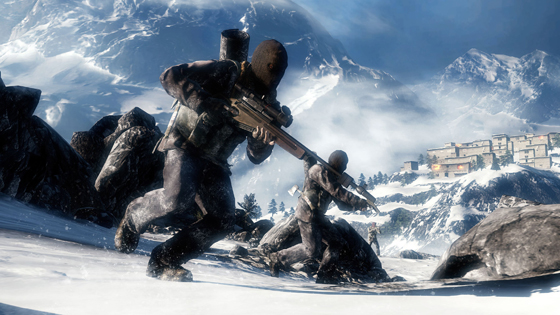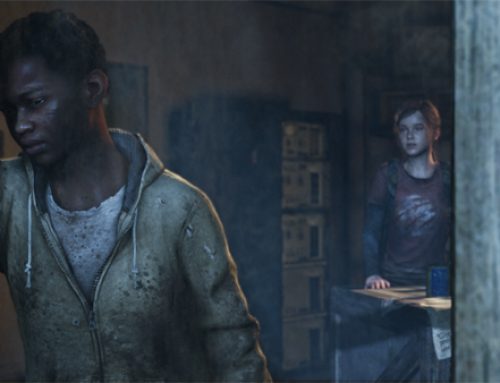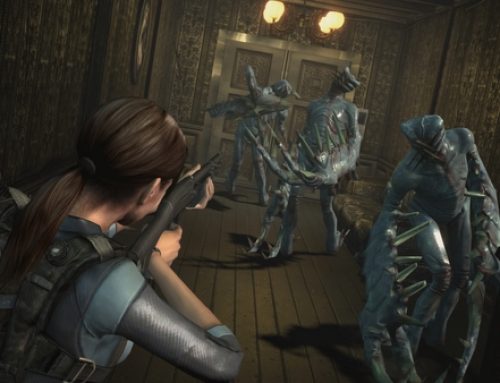
These dudes will now be known as the Opposing Force, rather than the Taliban, in "Medal of Honor's" online multiplayer.
Outside of the “Tom Clancy’s Rainbow Six Vegas” games, I’ve largely passed up this console generation’s realistic warfare games such as the “Call of Duty,” “Modern Warfare” and “Bad Company” franchises. The short single-player campaigns and lobbies full of kids spouting their favorite racist and homophobic slurs has never been much of a draw, and the fact that part of my job involves reading stories of real-life modern warfare means these kinds of games don’t give me much of an escape. If I’m going to be firing a gun in a game, I tend to favor less realistic fare like “Halo: Reach,” “BioShock 2” and “Borderlands.”
Recognizing that I’ve been writing about games for three years, and that these titles are huge draws for millions of gamers, I’ve resolved to take the plunge this fall. I recently picked up “Call of Duty 4: Modern Warfare” for a go, and I’ll be reviewing “Call of Duty: Black Ops” sometime later this fall. I’ve also made a point of checking the progress of Electronic Arts’ “Medal of Honor” a couple of times during recent months.
“Medal of Honor” has been in the news a bit lately because its multiplayer component allowed half the players to take control of Taliban militants, with the aim of besting a team of American soldiers in such multiplayer staples as team deathmatch and sector control modes. In deference to service members and their families, EA recently announced that the Taliban would be referred to as the Opposing Force in multiplayer modes. The single-player aspect of the game, in which players only take control of coalition troops, remains unchanged.
Even though “Medal of Honor’s” multiplayer has garnered all the attention, I’ve been more interested in the game’s campaign. I find the idea of using an ongoing conflict as grist for the typical online shooter mill to be a little bit tacky. I wouldn’t exactly say I’m offended by it, but if a video game is going to tackle a sensitive subject, my hope is that it has something new and interesting to say. And, for whatever reasons, games with new and interesting things to say tend to say them within the confines of the solo game.
Naturally, when I got a chance to get my hands on “Medal of Honor” at a recent preview event in San Francisco, I made a beeline for the two PlayStation 3s running levels from the game’s campaign, rather than the couple of dozen stations where people were sampling the game’s multiplayer. (Because I’d spent the early part of that evening previewing Activision’s “DJ Hero 2,” I had less time to spend with “Medal of Honor” than some journalists.)
Based on the two levels I got to sample, it’s tough to say whether “Medal of Honor” has anything new to say about the war in Afghanistan, but it’s apparent that the level of craftsmanship and attention to detail is running high. The dusty hills and foreboding valleys of Afghanistan look like no other first-person shooter setting I’ve experienced. The land has a stark, unpopulated beauty that should be readily familiar to Americans now that the post-9/11 conflict has been going on for nearly a decade. The land’s tranquil beauty is, of course, frequently punctuated by gunfire of all types. If “Medal of Honor’s” developers get nothing else right, you can at least say they’ve nailed the sights and sounds of the war.
During my hands-on, I tried two of the game’s levels. The first saw me dropped off in the Shah-i-Kot Valley. The mission, which appeared to be inspired by Operation Anaconda, began when a seemingly routine troop deployment in a valley turned into a bloodbath as the Taliban opened fire from all sides. My soldier soon had to extract himself from the firefight, then lay down suppressing fire as his computer-controlled teammates helped gain the upper hand. From there, we infiltrated a Taliban-controlled village before moving on to clear a new landing zone for coalition forces.
None of this was as easy as it sounds, of course. The firefights were fierce, and “Medal of Honor” is great at giving you the feeling a Taliban ambush could occur at any moments, particularly in the portions set in and near villages. At the end of the first mission, there was a terrific moment of tension that I won’t spoil by detailing here, but it was among the most frenetic, intense gaming experiences I’ve had all year.
One aspect that would really enhance “Medal of Honor’s” constant sense of danger but probably would court too much controversy is if the villages you encounter weren’t so empty. Both levels I played, one on the ground and one in an Apache helicopter, featured radio chatter making it clear that any Taliban-controlled villages you were ordered to enter/blow up were clear of civilians. Given the Taliban’s reputation for using civilians as human shields, I wondered how much of that reflected reality and how much was a convenient way to sidestep the issue of civilian casualties. (Like a lot of modern war games, “Medal of Honor” was made with input from the U.S. military, which helped the game’s developers make the game look and sound realistic.)
Then again, there’s more “Medal of Honor” to unearth. I’m hoping that when I do get my hands on the game, I’ll discover some well thought-out level that makes me think a bit, such as a meeting with tribal elders in which I control a grunt who watches a commanding officer try to win the loyalty of villagers without firing a shot.
Based on what I saw of the single-player game and the portions I’ve sampled of the multiplayer at a few separate events, I’m convinced “Medal of Honor” will look and sound great. Fans of Activision’s “Modern Warfare” and EA’s “Battlefield: Bad Company” games ought to have a blast.
But the Afghan theater offers plenty of opportunity for incisive commentary on an ongoing conflict, or at least a chance to make civilians look at war and military service in a new light. I’m hoping EA delivers.



